
People who lived in Soviet times tend to have very different memories: some talk about fights in food lines since there were shortages, while others believe that everything was abundant and that the quality of food was more natural and better than today.
In fact, the situation was different at different times (the USSR went through various stages of economic development during its almost 70 years of existence). In addition, in such a vast country, the local reality in each region was often unique and unlike other areas of the USSR (read here about a system of so-called "supply categories").
Let's take a look at what you could buy in Soviet stores in various years and regions.
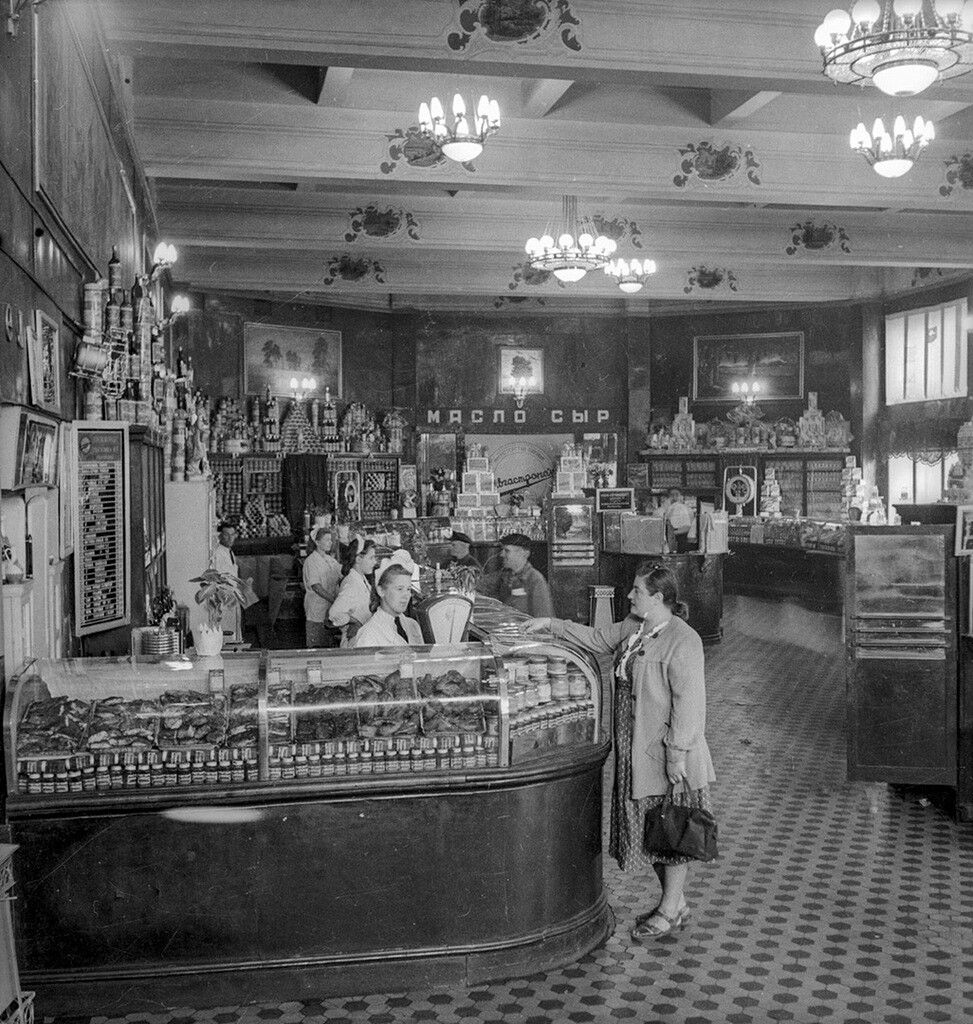
Moscow, Eliseevsky Store, 1950
Yevgeny Khaldei/MAMM/MDF/russiainphoto.ruThe naming of stores in the USSR was quite simple and straightforward, and reflected what was sold there: "Milk", "Bread", "Vegetables and Fruits". In addition, the cities had high-end gastronomes and supermarkets, which sold all kinds of food and household goods - just like today. Rural areas had the so-called "Selpo" (acronym for "rural store").
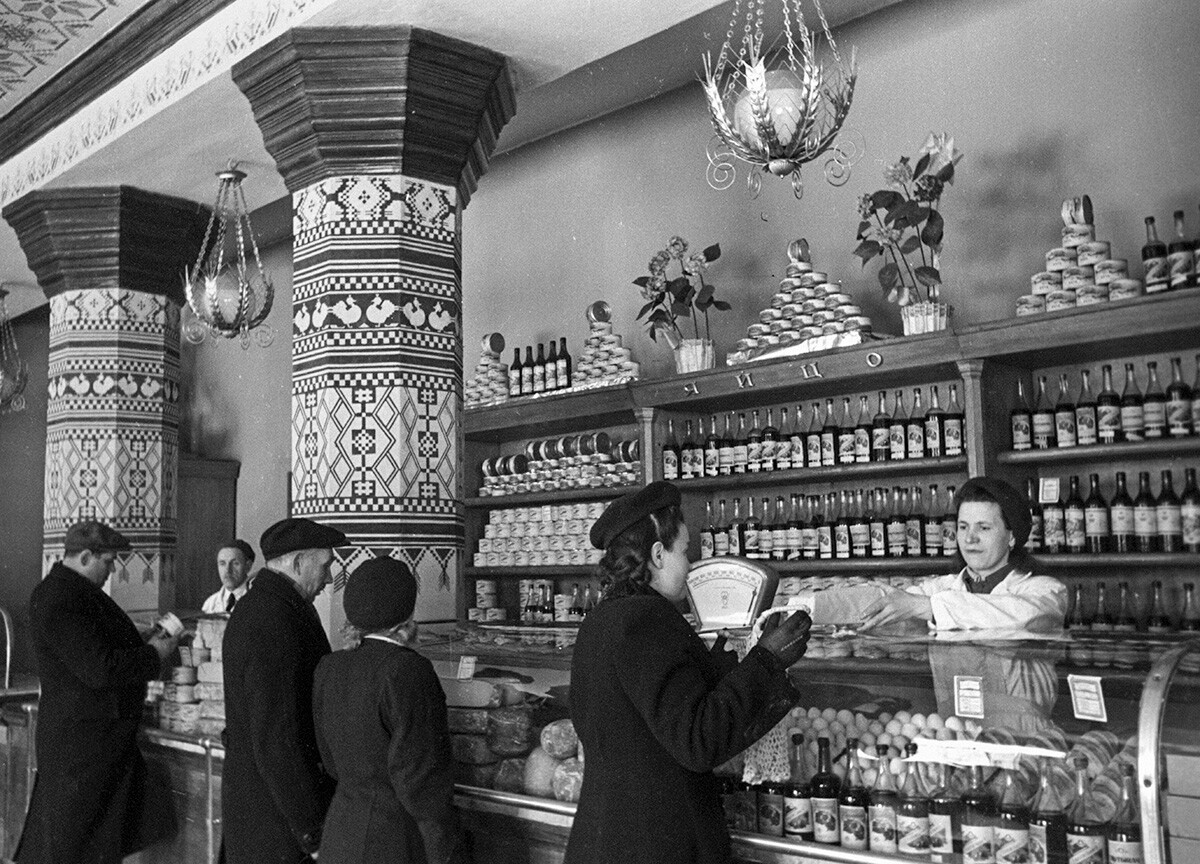
Moscow, 1958
Anatoly Garanin/SputnikToday, people are used to self-service, but in Soviet times there was a different system. In any particular department a customer chose an item (for example, sausage or cheese), then the assistant weighed it, stated the price; and finally, you paid at the register and only then could the item be picked up.
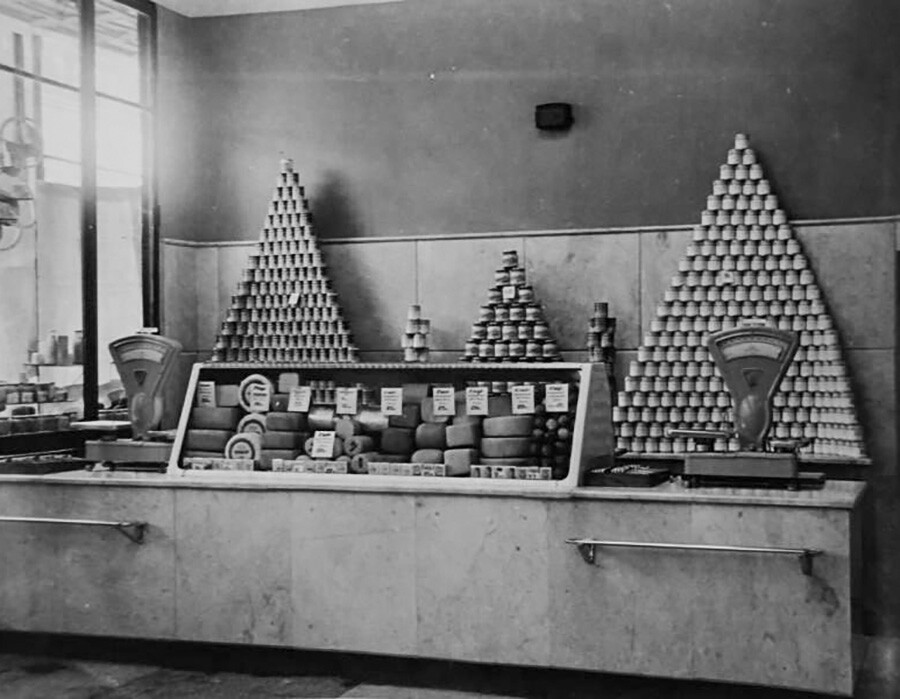
A grocery store in Stalingrad, south Russia, 1960
MAMM/MDF/russiainphoto.ruAs a rule, grocery stores worked roughly from 7 or 8 a.m. to 7 or 8 p.m. with a break for lunch. One day each month was the so-called ‘sanitation day’, when the store closed for a major cleaning. Hygiene was taken very seriously in the USSR.
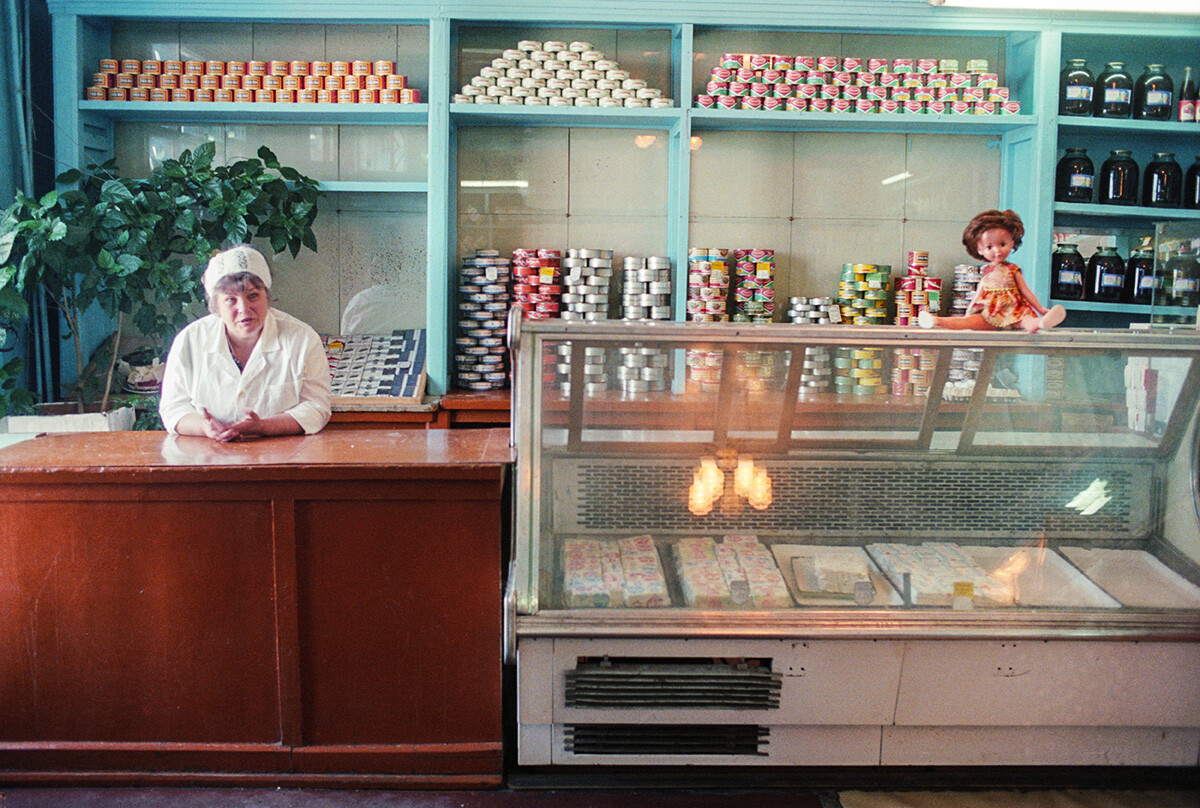
Leningrad Region, Novaya Ladoga, 1989
Yuri Belinsky/TASSThe USSR’s main grocery store was, of course, “Eliseevsky” on Gorky Street (now Tverskaya Street) in the heart of Moscow. Opened in 1901 by merchant Grigory Eliseev, in Soviet times it was called "Gastronome No. 1”. There were similar stores in Leningrad and Kiev. People came here not only for groceries, but also to see the luxurious historic interiors.
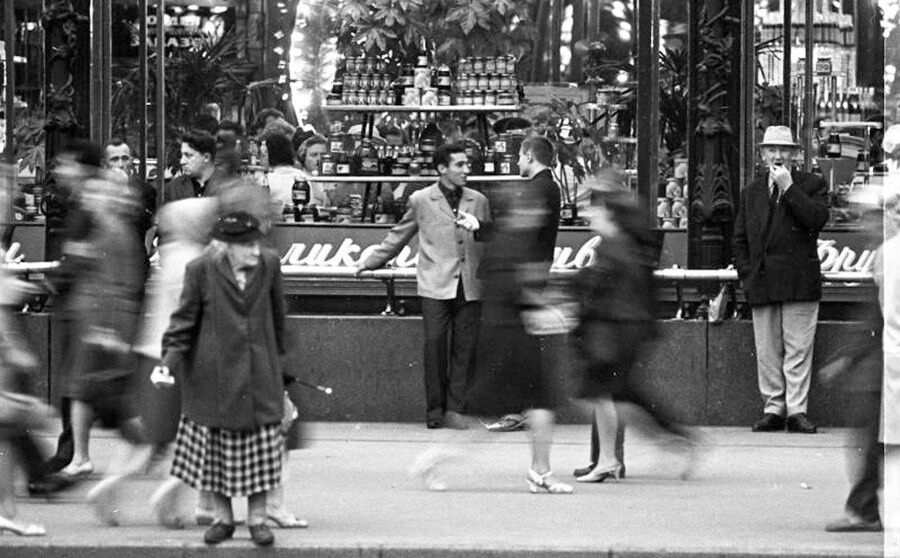
Eliseevsky in Leningrad, 1960s
Vsevolod Tarasevich/MAMM/MDF/russiainphoto.ruThis store had everything. Even when there was a shortage of goods in other stores, Eliseevsky had cheese, sausage, wine, and candy of several varieties and excellent quality. What's interesting is that everything cost usual Soviet prices (before, food prices were set by the state, not by the store).
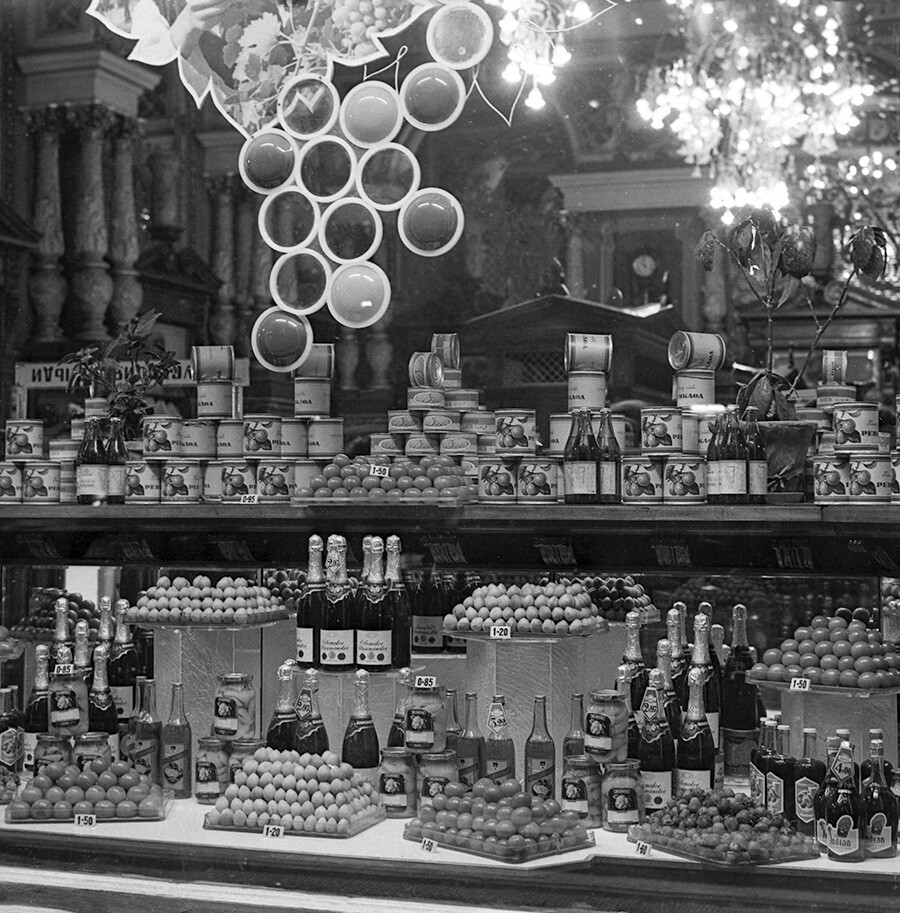
Wine and fruits in Moscow’s Eliseevsky, 1965
Nikolai Maksimov/SputnikAnyone could come here, but you might wait all day in line and in the meantime the food could run out. So, it was highly advised to come early in the morning. The Kiev store burned down in the 1940s. The Moscow store closed in 2021. In St. Petersburg, however, it’s still open.
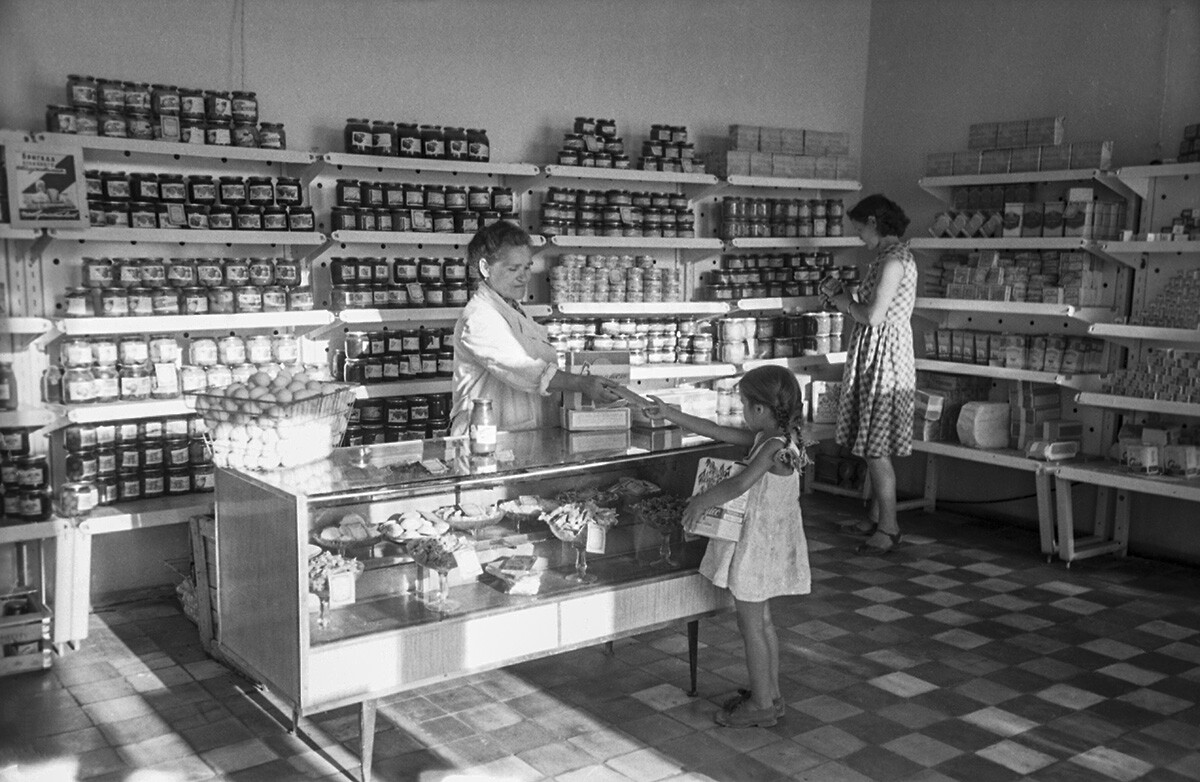
A rural store in Saratov Region, south Russia, 1967
G.Shcherbakov/SputnikWhat was on the shelves of ordinary stores? This was the typical window of an average Soviet town food store in the 1960s-1980s. Available were canned goods displayed in the form of a pyramid, juices in a jar, cheeses or sausages. Cookies and candy were sold by weight, and were usually in abundance. You could also buy local dairy products in any grocery store, which had a shelf life of only a few days. Milk and kefir bottles had a deposit value and could be returned to the store.
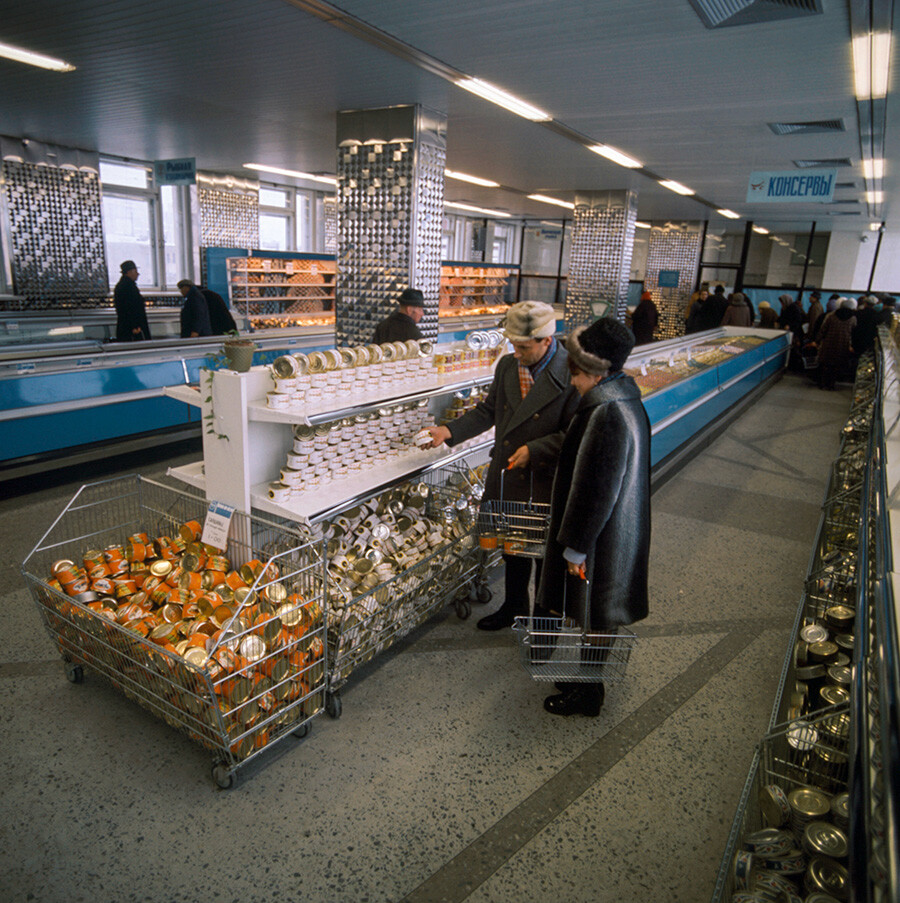
A fish store in Murmansk, north Russia, 1976
Semyon Maisterman/TASSCanned goods, in general, took up much space in any store, whether in the south or in the north. These items were inexpensive, and almost all were locally manufactured. Many cities had specialized "Ocean" seafood stores, where one could see an even greater variety of canned fish, from sprats to red and black caviar.
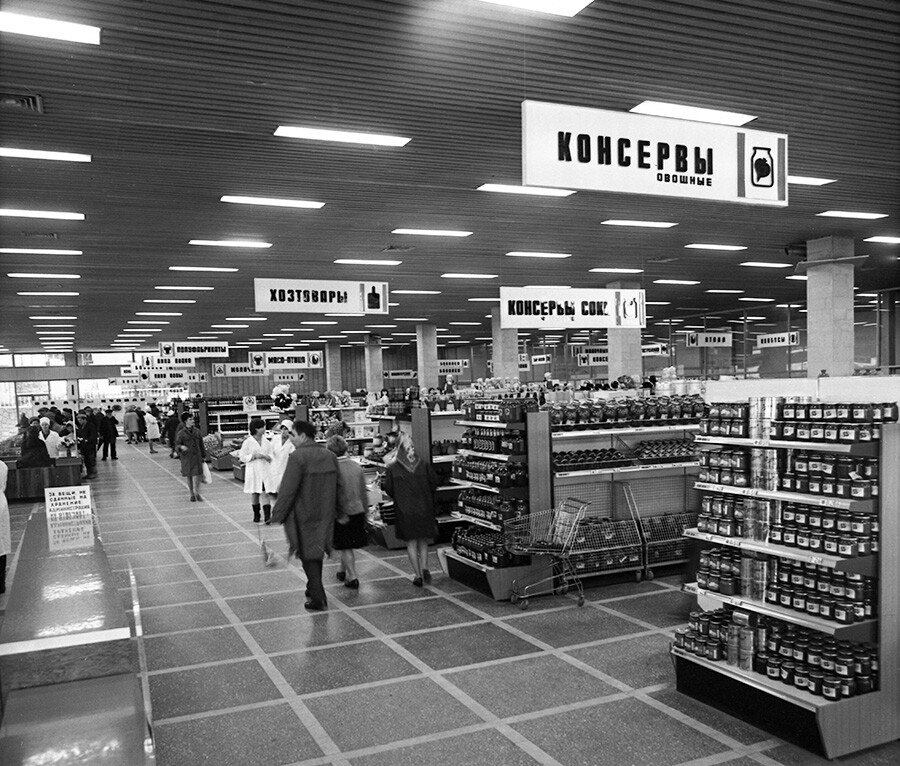
A mall in Sochi, Black Sea resort, 1971
Rudolf Alfimov/SputnikRegular city stores rarely had a good offering of meats, and so urbanites had to go to the local farmers markets, where the meat was 2-3 times more expensive but at least it was available. If you couldn't afford this then you made chopped-meat cutlets from whatever you could find.
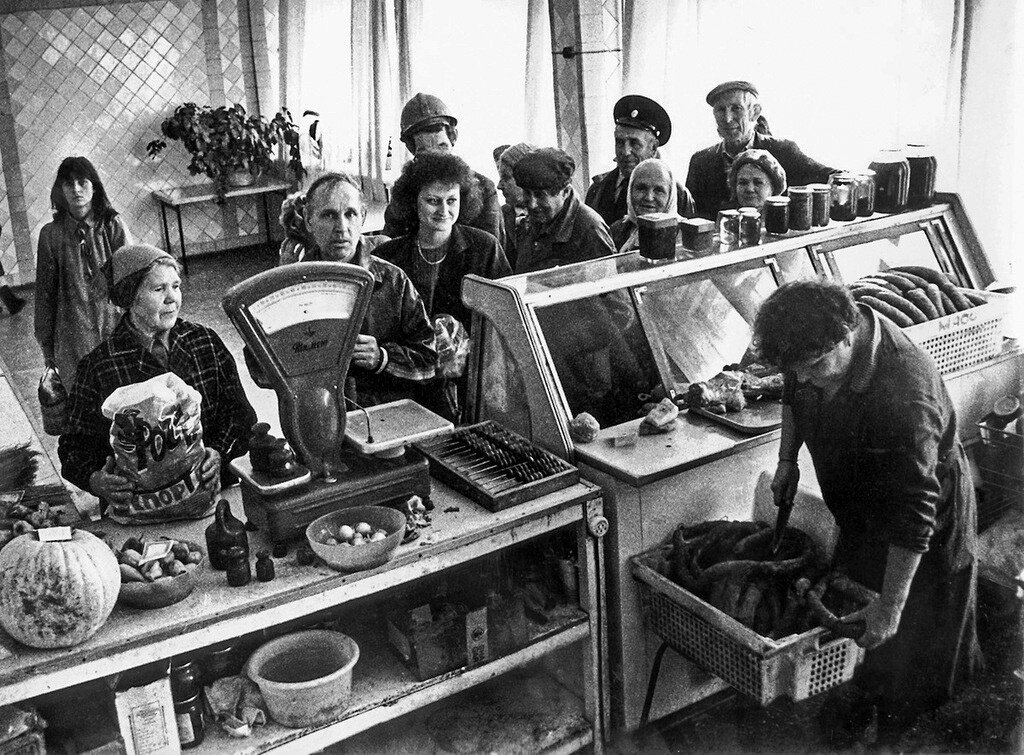
A rural store in the Chelyabinsk Region, 1990
Boris Kaulin/Southern Urals historical museum/russiainphoto.ruAs soon as something was delivered to the store, long lines quickly formed. In 1990 the country introduced a rationing system, and in spring 1991, due to monetary reform, food prices in the country tripled. In December 1991, the USSR ceased to exist.
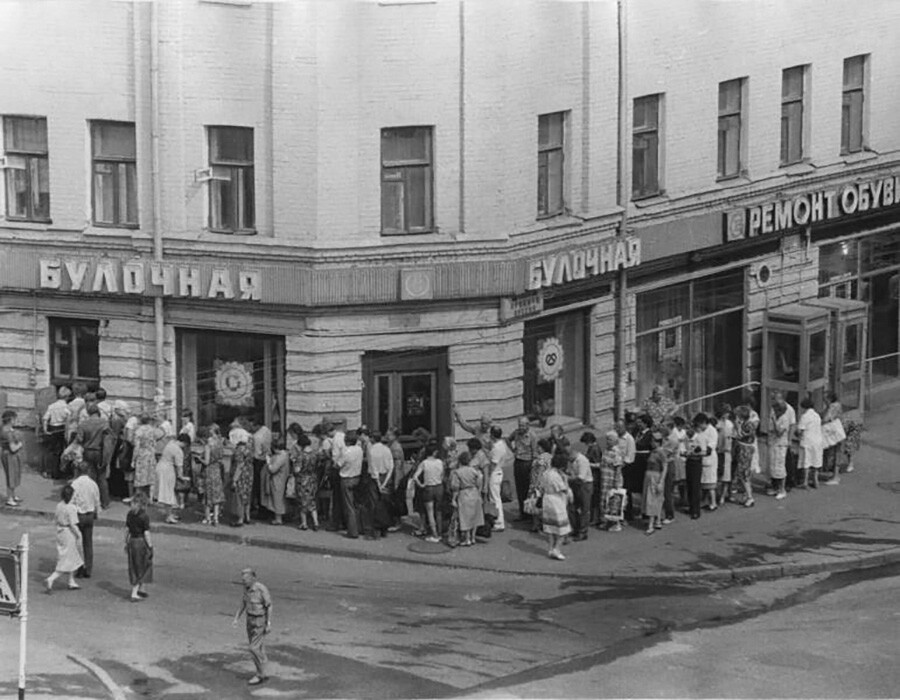
A line for bread, Moscow, 1988
Vladimir Sergienko/MAMM/MDF/russiainphoto.ruDear readers,
Our website and social media accounts are under threat of being restricted or banned, due to the current circumstances. So, to keep up with our latest content, simply do the following:
If using any of Russia Beyond's content, partly or in full, always provide an active hyperlink to the original material.
Subscribe
to our newsletter!
Get the week's best stories straight to your inbox